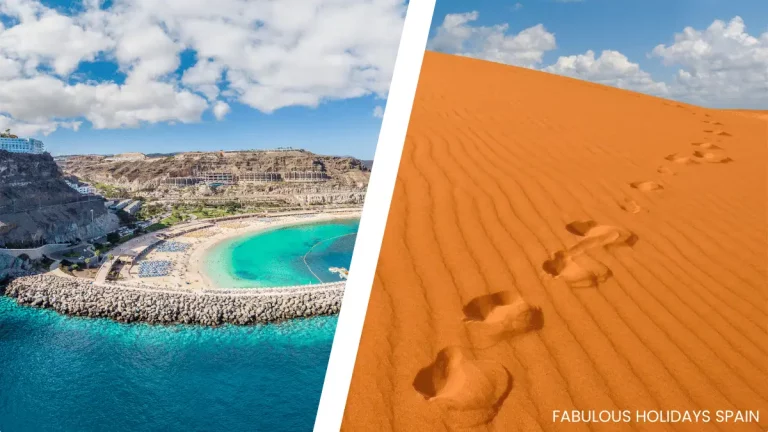Complete Canary Islands Guide for All 7 Islands
Imagine a place where the sun shines year-round, the endless sand beaches, and crystal-clear ocean water. Now, add in lush rainforests, towering mountains, and volcanic landscapes. That’s what this Canary Islands guide is all about.
It’s a place where you can go hiking through the rainforests, swim in the ocean, or relax on the beach. You can also visit ancient ruins, go on safari, or even swim with dolphins. You choose!
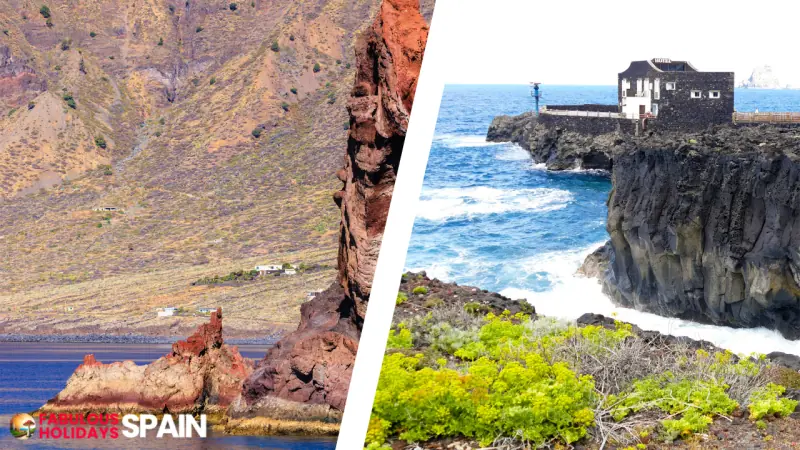
In this Canary Islands guide, I will uncover the unique archipelago located off the coast of Africa.
Tenerife
Fuerteventura
Gran Canaria
Lanzarote
La Palma
La Gomera
El Hierro
The Canary Islands are known for their volcanic landscapes, stunning beaches, and unique culture. The islands offer a variety of activities from hiking and snorkelling to sunbathing and exploring historical landmarks.
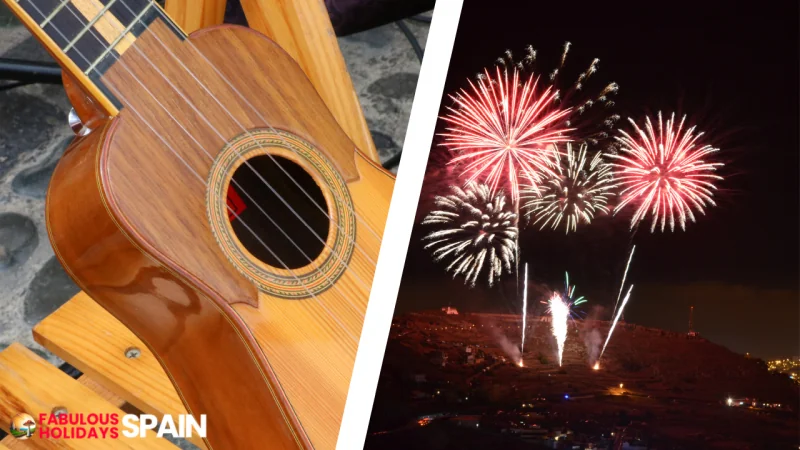
In the azure waters of the Atlantic Ocean, the Canary Islands, an autonomous community of Spain, surprise travellers with their volcanic landscapes, pristine beaches, and vibrant culture.
This archipelago, comprising seven main islands and several smaller islets, offers diverse experiences for every kind of traveller.
The Canary Islands consist of seven islands, and in this article, I’ll highlight their unique charm.

1. Canary Islands Guide for Tenerife
Tenerife is the largest and most populous island of the Canary Islands. It is located in the Atlantic Ocean, about 1,000 kilometres (621 miles) off the coast of Africa.
Tenerife is also the largest of Spain’s Canary Islands. It’s dominated by Mt. Teide, a dormant volcano that is the tallest peak in Spain.

Tenerife Cities and Towns
Santa Cruz de Tenerife – The capital of Tenerife and the second-largest city in the Canary Islands. It is a vibrant city with a mix of historical and modern architecture.
San Cristóbal de La Laguna – The former capital of Tenerife and a UNESCO World Heritage Site. It is a beautiful city with a well-preserved historic centre.
Tenerife is home to Mount Teide, the third-highest volcano in the world and the highest peak in Spain.
Source
Puerto de la Cruz – A popular tourist resort with a long history of tourism. It is known for its beaches, black sand, and banana plantations.
Arona: Home to the famous Playa de las Américas and Los Cristianos, known for their lively nightlife and water sports activities.
La Orotava – A charming town in the north of Tenerife. It is known for its beautiful architecture, lush gardens, and traditional festivals.
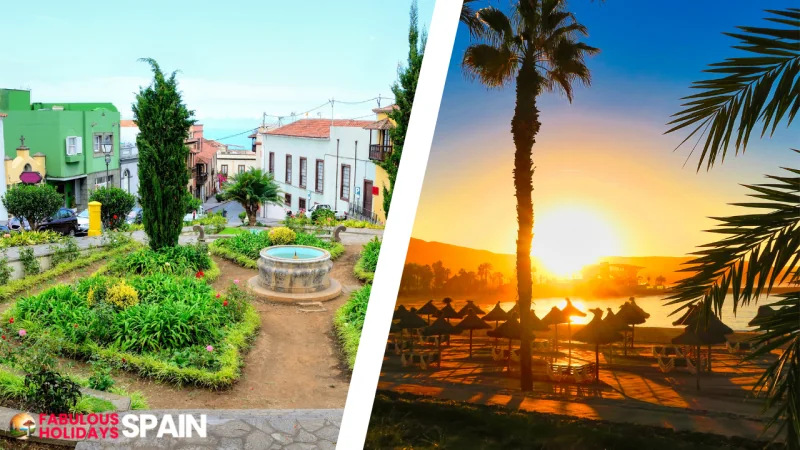
Garachico – A small town on the north coast of Tenerife. It is known for its black sand beaches and its history as a former port city.
Candelaria – A town in the east of Tenerife. It is a popular pilgrimage site and home to the Basilica of Candelaria, the patron saint of the Canary Islands.
Icod de los Vinos – A town in the north of Tenerife. It is known for its Drago Milenario, a dragon tree that is said to be over 800 years old. It is around 20–21 metres (66–69 ft) tall, with a circumference of around 20 metres (66 ft).
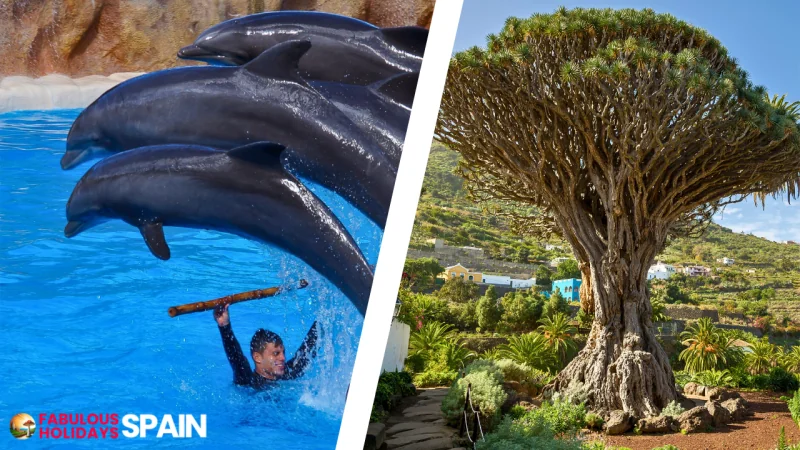
Tacoronte – A large town in the south of Tenerife. It is known for its traditional architecture, its vineyards, and its carnival.
El Sauzal – A small town in the north of Tenerife. It is known for its vineyards and its stunning views of Mount Teide.
Los Realejos – A large town in the north of Tenerife. It is known for its traditional architecture, its lush forests, and its fiestas.
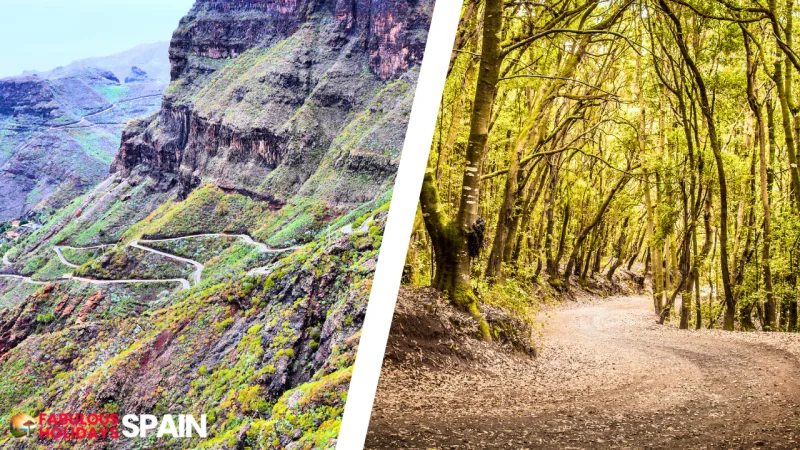
La Laguna – A district of San Cristóbal de La Laguna. It is home to the University of La Laguna, one of the oldest universities in Spain.
La Matanza de Acentejo – A town in the east of Tenerife. It is known for its traditional festivals, its vineyards, and its mountain scenery.
Fasnia – A small town in the south of Tenerife. It is known for its traditional architecture, its lush forests, and its banana plantations.

Güímar – A large town in the south of Tenerife. It is known for its pyramid-shaped rock formations, which are a mysterious geological phenomenon.
San Miguel de Abona – A large town in the south of Tenerife. It is known for its beaches, its golf courses, and its water sports.
Adeje – A large resort town on the south coast of Tenerife. It is known for its golden beaches, its luxury hotels, and its water sports.

Arafo – A small town in the south of Tenerife. It is known for its traditional architecture, its vineyards, and its mountain scenery.
El Tanque – A small town in the north of Tenerife. It is known for its lush forests, its mountain scenery, and its traditional architecture.
Valle de Guerra – A district of La Laguna. It is home to the Anaga Rural Park, one of the largest protected areas in the Canary Islands.
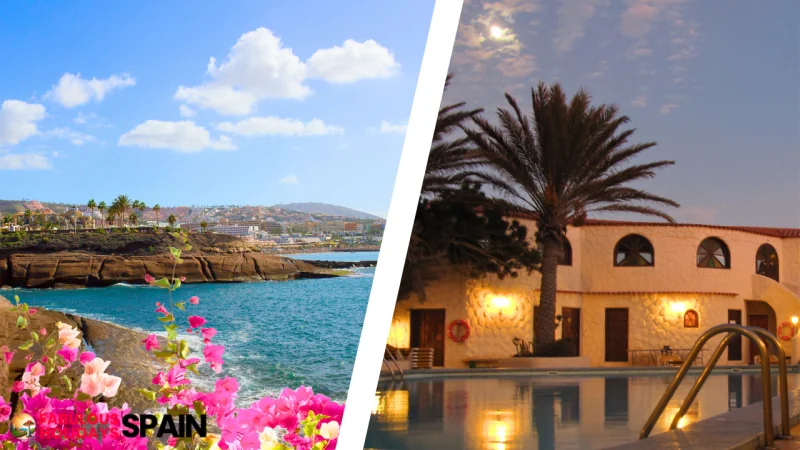
Tegueste – A town in the north of Tenerife. It is known for its traditional architecture, its vineyards, and its mountain scenery.
What is Tenerife Weather Like?
Tenerife enjoys a warm and sunny climate year-round, with mild winters and cool summers. The island’s diverse topography creates microclimates, ranging from warm coastal regions to cooler mountainous areas.
What is Tenerife Culture and Cusine?

Tenerife’s culture is a rich blend of Spanish, Guanche, and African influences. The island’s traditions, folklore, and cuisine reflect this diverse heritage.
Tenerife has a Rich History
Tenerife is home to the indigenous inhabitants of the ancient Guanches, the Canary Islands. The island has a rich history, marked by Spanish conquest, exploration, and cultural exchange.
Today, Tenerife is a modern and cosmopolitan island with a strong economy and cultural identity.
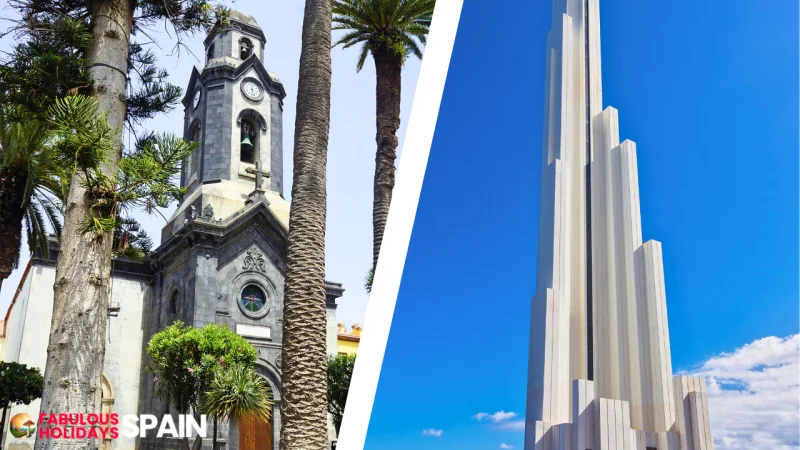
The island’s rich history, natural beauty, and vibrant culture continue to attract visitors worldwide.
Tenerife is a place where tradition and modernity intertwine, making it a truly unique and fascinating destination.
Tenerife Has Resorts for families, couples, and seniors
Tenerife offers various resorts to suit every taste and budget, from luxurious beachfront accommodations to family-friendly all-inclusive resorts.
Popular resort areas include Playa de las Américas, Los Cristianos, and Costa Adeje.
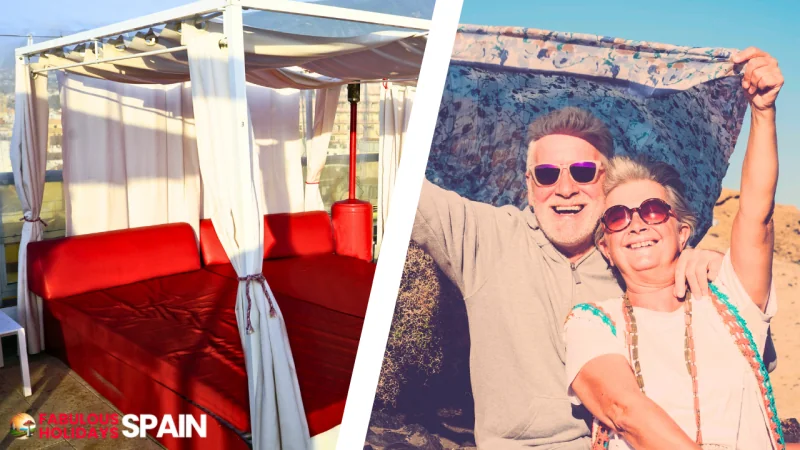
2. Canary Islands Guide for Fuerteventura
The second largest island in the Canary Islands, Fuerteventura is known for its long stretches of golden sand beaches. It is also a popular destination for windsurfing and kitesurfing.
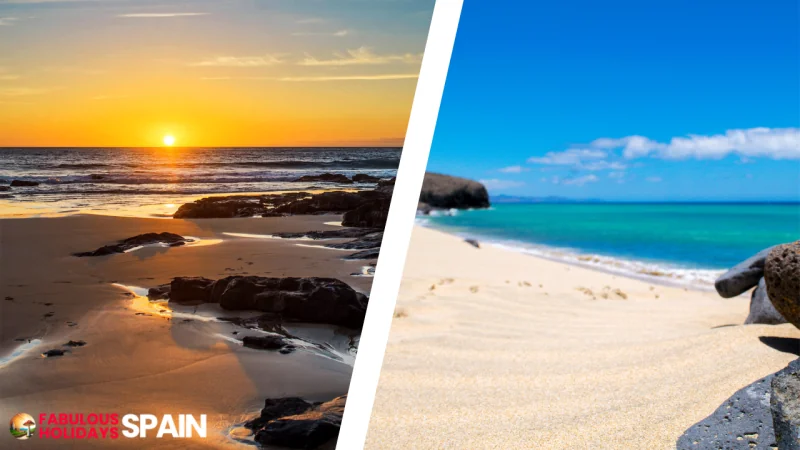
What are Fuerteventura towns and cities?
Caleta de Fuste is a popular resort town with a long stretch of golden sand beach, a bustling marina, and a variety of restaurants and bars. It’s a great choice for families and those who want to enjoy a variety of activities, including water sports, golf, and hiking.
Puerto del Rosario is the capital of Fuerteventura and a lively port city with a charming old town, a vibrant market, and several museums and cultural attractions. It’s a great place to experience the island’s rich history and culture.
Corralejo is a charming town with a picturesque harbour, narrow streets lined with traditional Canarian houses, and a lively nightlife scene. It’s a popular destination for windsurfing and kitesurfing, and it’s also home to many natural attractions, including the Corralejo Dunes.
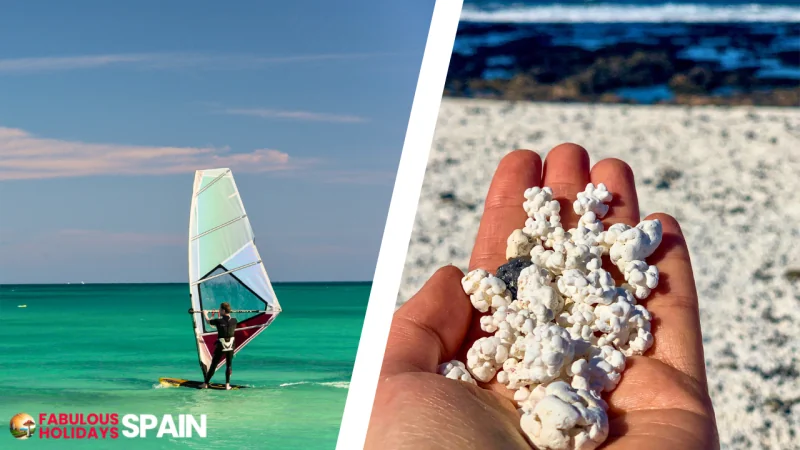
Tindaya is a small village nestled in the mountains of central Fuerteventura. It’s known for its prehistoric rock carvings, which are believed to have been created by the Guanches, the island’s original inhabitants.
El Cotillo is a small fishing village with a beautiful sandy beach, a relaxed atmosphere, and several traditional Canarian restaurants. It’s a great place to escape the crowds and enjoy the tranquillity of the island.
Betancuria is a former capital of Fuerteventura and a charming town with a well-preserved historic centre, including a 16th-century church and several traditional Canarian houses. It’s a great place to learn about the island’s history and culture.
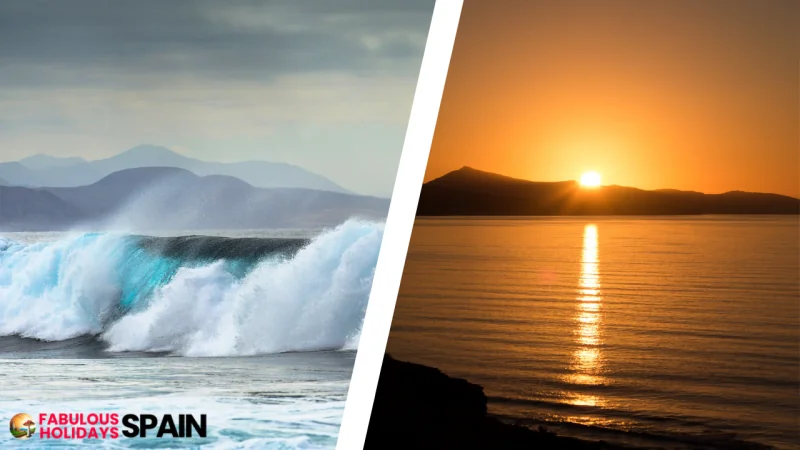
Tuineje is a small town with a beautiful church, a traditional Canarian market, and many vineyards. It’s a great place to experience the island’s rural charm and relax in the peaceful atmosphere.
What is Fuerteventura weather?
Fuerteventura enjoys a subtropical climate with warm, sunny weather year-round.
The average temperature is around 22°C (72°F), with highs typically ranging from 25°C to 27°C (77°F to 81°F) and lows from 17°C to 20°C (62°F to 68°F). The island also enjoys plenty of sunshine, with an average of over 3,000 hours of sunshine per year.
The weather in Fuerteventura varies slightly depending on the time of year and the location on the island. The southern coast is generally warmer and drier than the northern coast, and the higher elevations are cooler and more humid.
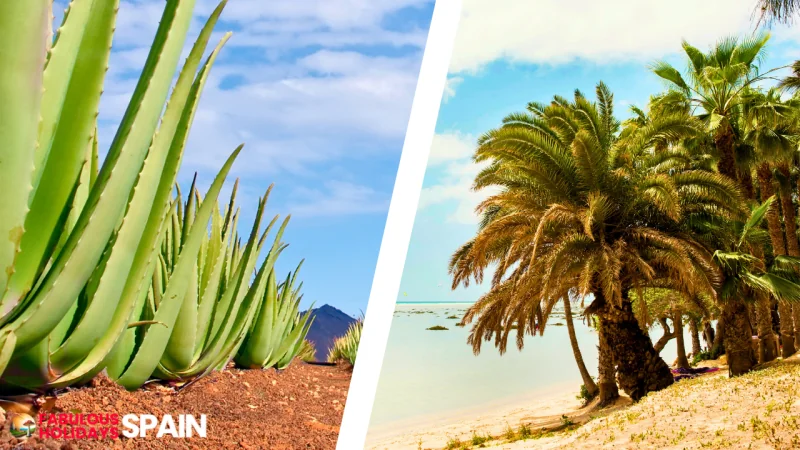
Here is a more detailed breakdown of the weather in Fuerteventura by season:
- Spring (April to June): The weather in spring is pleasant and sunny, with average temperatures in the mid-20s Celsius (70s Fahrenheit). The days are long and there is little rainfall. This is a popular time to visit for those who want to enjoy the outdoors and avoid the crowds.
- Summer (July to September): Summer is the warmest and driest time of year on Fuerteventura. Temperatures can reach up to 30°C (86°F) or higher, and humidity is low. This is a great time to enjoy the beaches and swimming pools, but it can also be quite hot, so be sure to stay hydrated.
- Autumn (October to November): Autumn is a shoulder season on Fuerteventura, with pleasant temperatures and less humidity than in the summer. This is a good time to visit if you want to avoid the crowds and enjoy some of the lower prices.
- Winter (December to February): Winter is the coolest time of year on Fuerteventura, but temperatures rarely drop below 15°C (59°F). There is also less rainfall than in the summer. This is a great time to enjoy the island’s many cultural events and festivals.
Fuerteventura is a haven for outdoor enthusiasts, offering beaches, world-class windsurfing, kitesurfing, and deep-sea fishing opportunities.
Source
What is Fuerteventura culture?
Traditional Canarian Architecture
Fuerteventura is known for its whitewashed houses with red-tiled roofs, which are a distinctive feature of the island’s landscape.
Fuerteventura handicrafts
Fuerteventura is a popular destination for buying traditional Canarian handicrafts, such as ceramics, embroidery, and basket weaving.

Festivals and celebrations of Fuerteventura
Fuerteventura has a rich calendar of festivals and celebrations throughout the year, including the Carnaval de Puerto del Rosario, the Virgen de la Candelaria pilgrimage, and the Romería de San Marcos.
Fuerteventura cuisine
Fuerteventura cuisine is a fusion of Spanish and Canarian influences, with dishes such as papas arrugás (wrinkled potatoes) with mojo picón (spicy sauce), gofio (a type of flour made from toasted wheat or barley), and fresh seafood.
Meal times in Spain
It’s important to know about meal times in Spain. Their schedule is unique and if you don’t prepare you might go hungry.
Music of Fuerteventura
Fuerteventura music is lively and upbeat, with a strong flamenco influence. The island is also home to several traditional music festivals.
What is the history of Fuerteventura?
From its earliest inhabitants to its modern-day tourist destination, the island has undergone a remarkable transformation.
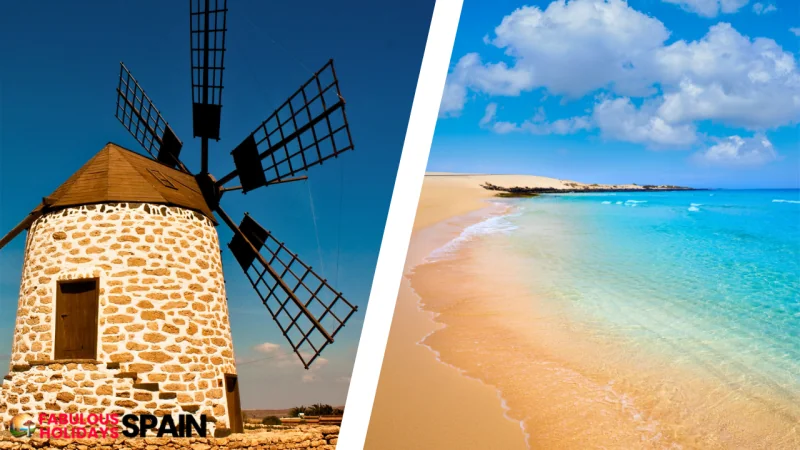
Early Inhabitants and Guanche Culture
Fuerteventura’s story begins with the arrival of the Guanches, a Berber-speaking people who settled on the island around 1000 BC.
The Guanches were skilled farmers, herders, and fishermen, and they adapted to the island’s harsh climate and volcanic landscape.
They left behind a legacy of cave dwellings, petroglyphs, and other artefacts that provide a glimpse into their way of life.
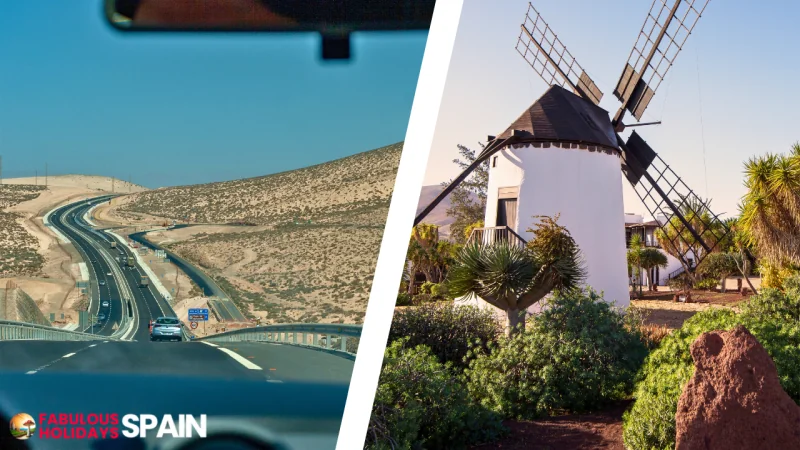
Fuerteventura is well-connected by a network of roads, making it easy to get around the island. The main roads are generally in good condition
Spanish Conquest and Colonial Rule
In 1402, Spanish explorer Jean de Bethencourt and his men arrived in Fuerteventura, marking the beginning of the island’s colonial period.
The Guanches resisted the Spanish invaders, but after a decade-long war, Fuerteventura fell under Spanish rule in 1496.
The Spanish brought with them Christianity, Spanish language and customs, and a new economic system based on agriculture and trade.
The Guanche culture did not disappear entirely, and many of its traditions and customs were absorbed into the new society.
Development and Modernization
During the 16th and 17th centuries, Fuerteventura‘s economy thrived as it became a major producer of sugar, wine, and citrus fruits. The island also developed a thriving trade network with mainland Spain and other European countries.
The 19th century saw a period of industrialization, with the development of industries such as agriculture, fishing, and textiles. Fuerteventura also began to attract tourists, drawn to its beautiful scenery, mild climate, and volcanic landscapes.

Fuerteventura of the Canary Islands is home to several volcanoes and craters, remnants of the island’s volcanic activity millions of years ago. Some of the most popular craters to visit include Calderón Hondo in the north, Las Calderas in the northwest and Malpaís de la Arena in the northeast
20th and 21st Centuries: Tourism and Sustainable Development
The 20th century was a period of significant change for Fuerteventura. The island experienced rapid tourism growth, which became its main economic driver.
However, this growth also led to environmental concerns about the impact of mass tourism.
In response, Fuerteventura has made a strong commitment to sustainable development, adopting practices that minimize the environmental impact of tourism while preserving the island’s natural beauty.
Contemporary Fuerteventura: A Sustainable Tourism Destination

Today, Fuerteventura is a popular tourist destination known for its stunning beaches, volcanic landscapes, and warm hospitality.
The island has made a concerted effort to develop sustainable tourism practices, and it has been recognized for its efforts by organizations such as the World Travel and Tourism Council.
Fuerteventura is a leader in eco-friendly tourism, and it continues to attract visitors from around the world who are seeking a unique and sustainable travel experience.
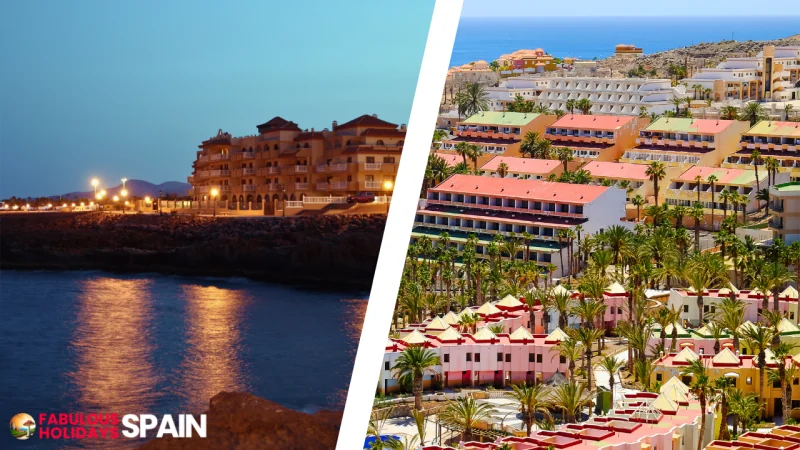
Fuerteventura is a popular tourist destination known for its stunning beaches, volcanic landscapes, and warm hospitality.
The island has a wide range of resorts to choose from, catering to a variety of budgets and interests.
3. Canary Islands Guide for Gran Canaria
Gran Canaria, the third largest and most populous of the Canary Islands, offers a vibrant mix of natural beauty, cultural heritage, and modern amenities.
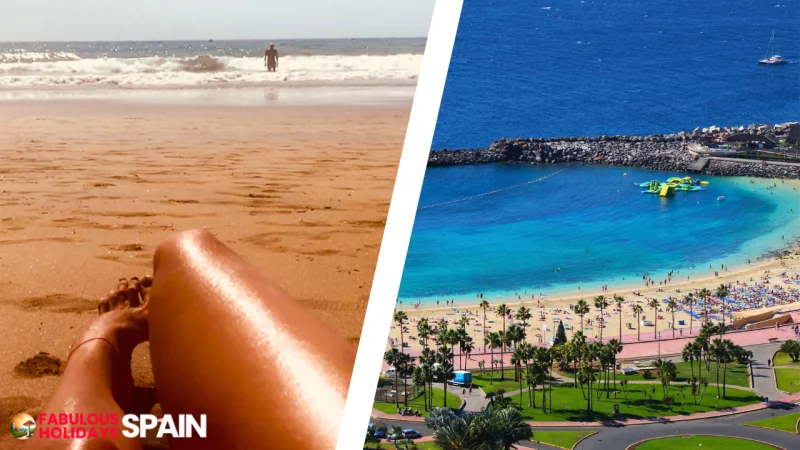
Gran Canaria Cities and towns
It’s a popular destination for sun-seekers and adventure enthusiasts, with its diverse landscapes, stunning beaches, and various activities to enjoy.
Las Palmas de Gran Canaria – The capital of Gran Canaria, Las Palmas de Gran Canaria is a bustling metropolis with a rich history dating back to the 15th century. It boasts a vibrant cultural scene, including museums, theatres, and art galleries. The city’s Old Town showcase colourful Canarian architecture and charming plazas.
Maspalomas – A popular resort town on the southern coast, Maspalomas is known for its stunning beaches, including the iconic Maspalomas Dunes, a picturesque expanse of golden sand stretching for miles. The town also offers a variety of water sports, restaurants, and nightlife options.
Puerto de Mogán – A charming fishing village transformed into a picturesque resort town, Puerto de Mogán is known for its canal-lined streets, traditional Canarian architecture, and relaxed atmosphere. The town’s sheltered marina is home to a variety of yachts and boats, while the surrounding beaches offer opportunities for swimming, sunbathing, and water sports.
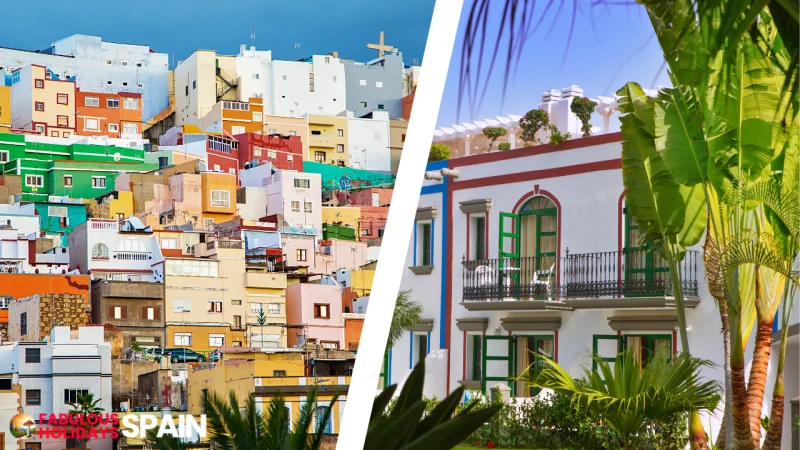
Agaete – A picturesque coastal town in the north of Gran Canaria, Agaete is known for its charming cobblestone streets, traditional Canarian architecture, and the Mirador de la Cruz del Teide, a viewpoint offering stunning panoramic views of the island. The town’s beaches are also popular among sun-seekers and surfers.
Tejeda – A highland town nestled in the island’s interior, Tejeda is surrounded by stunning natural beauty, including the Roque Nublo (Cloud Rock), a majestic granite monolith that stands as a symbol of Gran Canaria. The town itself is known for its traditional Canarian architecture, its artisan shops, and its picturesque squares.
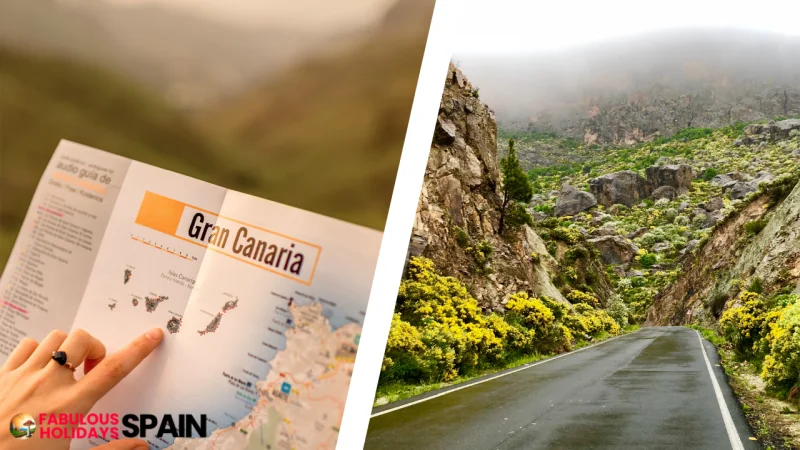
Teror – A charming town in the north of Gran Canaria, Teror is home to the Basílica de Nuestra Señora del Pino, a Marian basilica dedicated to the island’s patron saint. The town’s narrow streets and whitewashed houses exude a tranquil atmosphere, making it a popular destination for those seeking a more laid-back experience.
Arucas – A historic town in the north of Gran Canaria, Arucas is known for its imposing Iglesia de San Juan Bautista, a striking example of Canarian Baroque architecture. The town’s surrounding area is home to several banana plantations, adding to its unique character.
Ingenio – A picturesque town in the south of Gran Canaria, Ingenio is known for its beautiful scenery, including the charming Barranco de Guayadeque, a deep ravine with lush vegetation and traditional Canarian farmhouses. The town’s central square is a lively hub of activity, with cafes, restaurants, and a vibrant market.
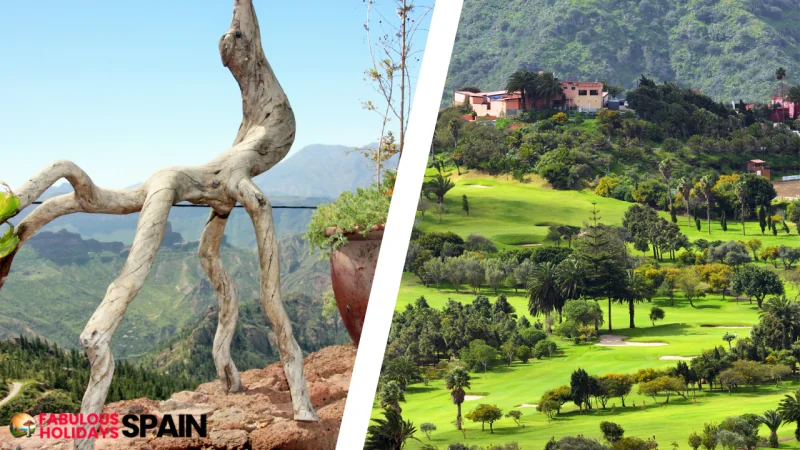
What is Gran Canaria Weather Like?
Gran Canaria enjoys a subtropical climate with mild temperatures year-round.
The average temperature is around 22°C (72°F), with highs typically ranging from 25°C to 28°C (77°F to 82°F) and lows from 17°C to 20°C (62°F to 68°F).
The island also receives plenty of sunshine, with an average of over 3,000 hours of sunshine per year.
The weather on Gran Canaria varies depending on the time of year and the location on the island. The southern coast is generally warmer and drier than the northern coast, and the highlands are cooler and more humid.
To learn more check out the guide for Gran Canaria weather by month.

Here is a more detailed breakdown of the weather in Gran Canaria by season:
- Spring (April to June): The weather in spring is pleasant and sunny, with average temperatures in the mid-20s Celsius (70s Fahrenheit). The days are long and there is little rainfall. This is a popular time to visit for those who want to enjoy the outdoors and avoid the crowds.
- Summer (July to September): Summer is the warmest and driest time of year on Gran Canaria. Temperatures can reach up to 30°C (86°F) or higher, and humidity is low. This is a great time to enjoy the beaches and swimming pools, but it can also be quite hot, so be sure to stay hydrated.
- Autumn (October to November): Autumn is a shoulder season on Gran Canaria, with pleasant temperatures and less humidity than in the summer. This is a good time to visit if you want to avoid the crowds and enjoy some of the lower prices.
- Winter (December to March): Winter is the coolest time of year on Gran Canaria, but temperatures rarely drop below 15°C (59°F). There is also less rainfall than in the summer. This is a good time to visit if you want to avoid the crowds and enjoy some of the lower prices.
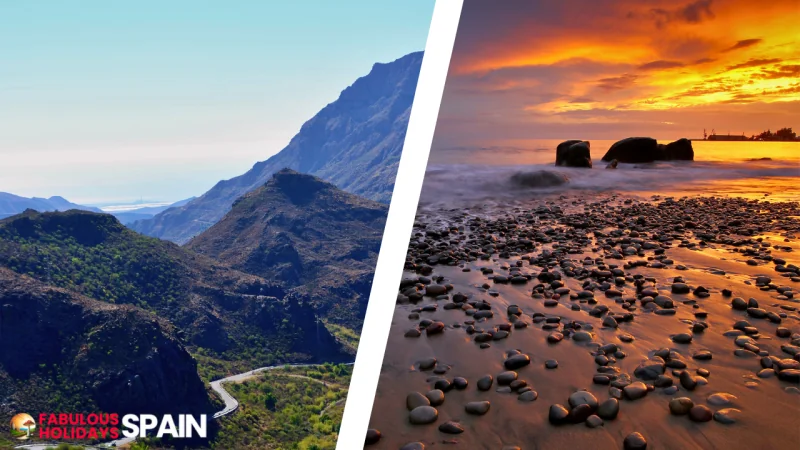
What is the culture of Gran Canaria?
Gran Canaria’s culture mixes Spanish, Guanche, and British influences. The island’s traditions, folklore, and cuisine reflect this diverse heritage.
What is the history of Gran Canaria?
Gran Canaria is known for its pre-Columbian settlements and its role in the Spanish conquest of the Americas. The island has a rich history, marked by exploration, cultural exchange, and the development of its unique identity.
What are the most popular Gran Canaria resorts?
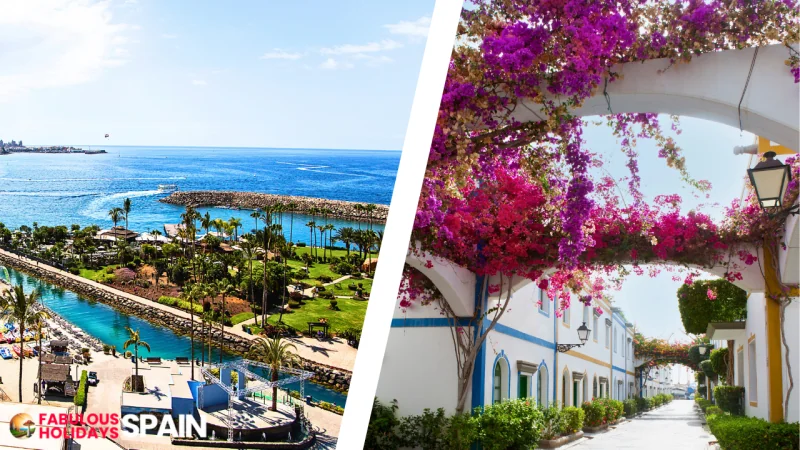
Gran Canaria offers various resorts to suit every taste and budget, from luxurious beachfront accommodations to family-friendly all-inclusive resorts. Popular resort areas include Playa del Inglés, Maspalomas, San Agustín, Puerto de Mogán, and Playa de las Canteras.
4. Canary Islands Guide for Lanzarote
Lanzarote is the fourth largest island in the Canary Islands, Lanzarote is known for its volcanic landscapes and black sand beaches.
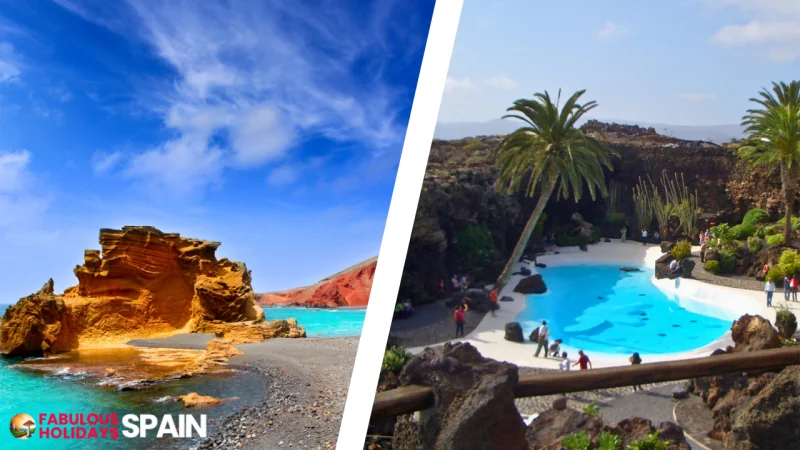
What are the biggest cities and towns on Lanzarote?
Arrecife: The capital of Lanzarote, Arrecife is a vibrant city with a mix of modern architecture and historical landmarks. It’s a popular base for exploring the island, with its bustling port, charming plazas, and lively nightlife.
Puerto del Carmen: A popular resort town on the southern coast, Puerto del Carmen is known for its long stretches of golden sand beaches, lively nightlife, and water sports facilities. It’s a great choice for families and those who want to enjoy a variety of activities.
Playa Blanca: Another popular resort town on the southern coast, Playa Blanca is known for its stunning beaches, including its iconic Papagayo Beach, and its relaxed atmosphere. It’s a great place to relax and enjoy the sun and sand.

Órzola: A charming fishing village in the north of the island, Órzola is the gateway to the Chinijo Archipelago, a group of small islands with stunning natural beauty. It’s a popular destination for hiking, diving, and whale watching.
Yaiza: A small town in the south of the island, Yaiza is known for its traditional Canarian architecture and its stunning views of Timanfaya National Park. It’s a great base for exploring the volcanic landscapes of the island.
Famara: A small town in the north of the island, Famara is known for its long stretch of black sand beach and its powerful waves. It’s a popular destination for surfing and windsurfing.
Teguise: A former capital of Lanzarote, Teguise is a charming town with a well-preserved historic centre. It’s home to many museums, art galleries, and traditional Canarian restaurants.
Haría: A small town in the north of the island, Haría is known for its lush gardens, its traditional Canarian architecture, and its beautiful scenery. It’s a great place to escape the crowds and enjoy the tranquillity of the island.
San Bartolomé: A small town in the east of the island, San Bartolomé is known for its beautiful beaches, its vineyards, and its traditional Canarian festivals. It’s a great place to experience the island’s unique culture and cuisine.
What is Lanzarote weather?
Lanzarote enjoys a subtropical climate with dry and sunny weather throughout the year. The average temperature is around 22°C (72°F), with highs typically ranging from 24°C to 27°C (75°F to 81°F) and lows from 16°C to 19°C (61°F to 66°F).
The island also enjoys plenty of sunshine, with an average of over 3,000 hours of sunshine per year.
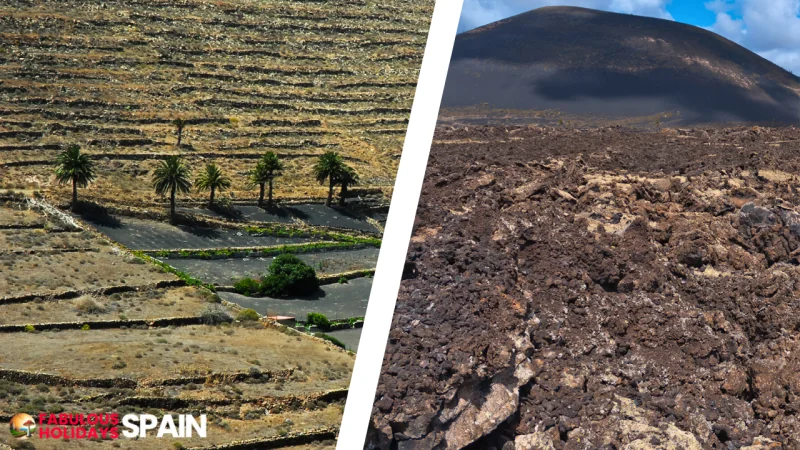
The weather on Lanzarote varies slightly depending on the time of year and the location on the island. The southern coast is generally warmer and drier than the northern coast, and the higher elevations are cooler and more humid.
Here is a more detailed breakdown of the weather in Lanzarote by season:
Spring (March to May): The weather in spring is pleasant and sunny, with average temperatures in the mid-20s Celsius (70s Fahrenheit).
The days are long and there is little rainfall. This is a popular time to visit for those who want to enjoy the outdoors and avoid the crowds.
Summer (June to August): Summer is the warmest and driest time of year on Lanzarote. Temperatures can reach up to 30°C (86°F) or higher, and humidity is low.
This is a great time to enjoy the beaches and swimming pools, but it can also be quite hot, so be sure to stay hydrated.
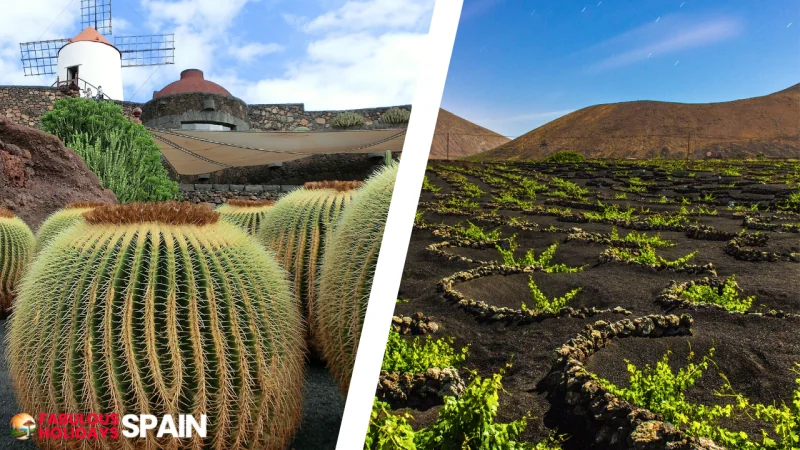
Autumn (September to November): Autumn is a shoulder season on Lanzarote, with pleasant temperatures and less humidity than in the summer.
This is a good time to visit if you want to avoid the crowds and enjoy some of the lower prices.
Winter (December to February): Winter is the coolest time of year on Lanzarote, but temperatures rarely drop below 15°C (59°F). There is also less rainfall than in the summer.
This is a great time to visit if you want to enjoy the island’s many cultural events and festivals.
Best time to visit Spain
Plan your visit based on your preferences (weather, prices, crowds, …). Check out my guide about best time to visit Spain to learn more.
What is Lanzarote culture?
Lanzarote’s culture is a blend of Spanish, Canarian, and Guanche influences. The Guanches were the indigenous people of the Canary Islands, and their culture has had a lasting impact on Lanzarote’s traditions, language, and cuisine.
Spanish culture is also prevalent on the island, as Lanzarote has been a part of Spain since the 15th century.
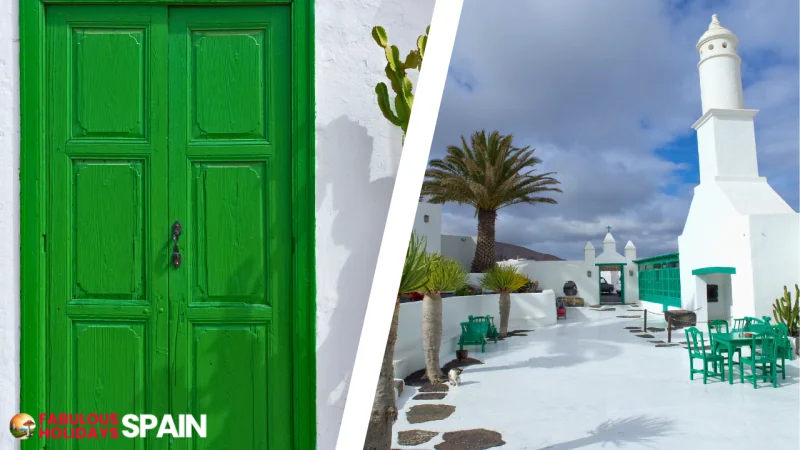
Lanzarote’s culture is evident in its architecture, art, and cuisine. Traditional Canarian architecture is characterized by its white-washed houses with red-tiled roofs.
Lanzarote’s art scene is vibrant and diverse, with a focus on contemporary art and sculpture.
The island’s cuisine is influenced by its volcanic landscape, with many dishes featuring local ingredients such as potatoes, tomatoes, and goat meat.
Lanzarote’s culture is also evident in its many festivals and celebrations. Some of the most popular festivals include the Carnival of Lanzarote, which is held in February, and the Fiesta de San Bartolomé, which is held in August.
These festivals are a great way to experience the island’s unique culture and traditions.
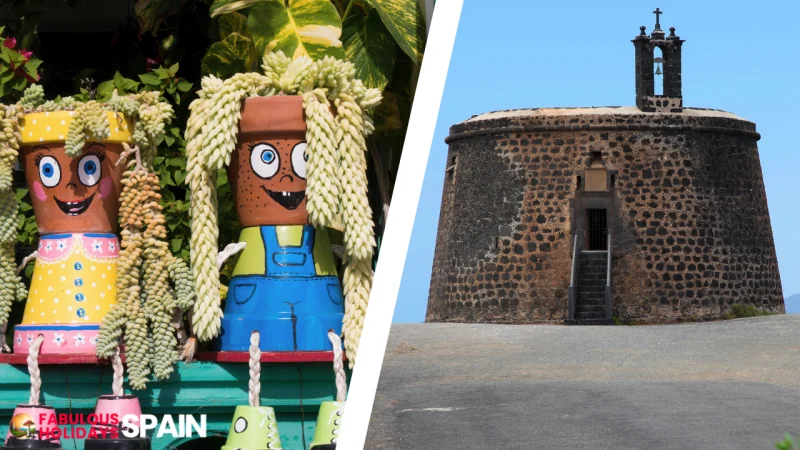
Here are some of the key aspects of Lanzarote’s culture:
- Gastronomy: Lanzarote’s cuisine is a blend of Canarian and Spanish flavours, with a focus on fresh, local ingredients. Some of the island’s signature dishes include gofio escaldado (a thick porridge made from roasted corn), papas arrugadas (small, wrinkled potatoes), and queso majorero (a type of goat cheese).
- Music and Dance: Lanzarote has a rich musical tradition, focusing on folk music and dance. Some of the island’s most popular music genres include timple music (a type of guitar) and folclore canario (Canarian folk music). Traditional dances include the isa (a lively dance) and the folía (a slower dance).
- Art and Architecture: Lanzarote is home to many art galleries and museums, showcasing both local and international artists. The island also has several architectural landmarks, including the Jameos del Agua, a natural lava cave that has been transformed into a cultural centre.
- Festivals and Celebrations: Lanzarote hosts several festivals and celebrations throughout the year, including the Carnival of Lanzarote, the Fiesta de San Ginés, and the Fiesta de San Bartolomé. These festivals are a great way to experience the island’s vibrant culture and traditions.
What is the history of Lanzarote?
Lanzarote has a fascinating history that spans millennia, shaped by volcanic eruptions, human settlements, and cultural influences.
From the arrival of the ancient Guanches to the Spanish conquest to the development of a unique cultural identity, Lanzarote’s story is a testament to its resilience, adaptability, and captivating spirit.
Early Inhabitants and Volcanic Origins
Lanzarote’s origins can be traced back to volcanic activity that began millions of years ago, shaping the island’s distinctive landscape. Around 1000 BC, the ancient Guanches, a Berber-speaking people, arrived on Lanzarote, drawn to the fertile land and abundance of natural resources.
They established small communities and developed a unique culture that blended agriculture, herding, and fishing, leaving behind remnants of their existence in cave dwellings and petroglyphs.
Spanish Conquest and Cultural Shifts

In 1402, Spanish explorer Jean de Bethencourt and his men arrived in Lanzarote, initiating the conquest of the Canary Islands. The Guanches fiercely resisted the invaders, but after a decade-long war, Lanzarote fell under Spanish rule in 1496.
The Spanish brought with them Christianity, Spanish language and customs, and a new economic system based on agriculture and trade. However, the Guanche culture did not disappear entirely, and many of its traditions and customs were absorbed into the new society.
Lanzarote Development and Cultural Fusion
Lanzarote’s economy thrived in the 16th and 17th centuries, as the island became a major producer of sugar, wine, and citrus fruits.
The island also developed a thriving trade network with mainland Spain and other European countries. The 19th century saw a period of industrialization, with the development of industries such as agriculture, fishing, and textiles.
Lanzarote also began to attract tourists, drawn to its beautiful scenery, mild climate, and volcanic landscapes.
Contemporary Lanzarote: A Fusion of Traditions and Modernity
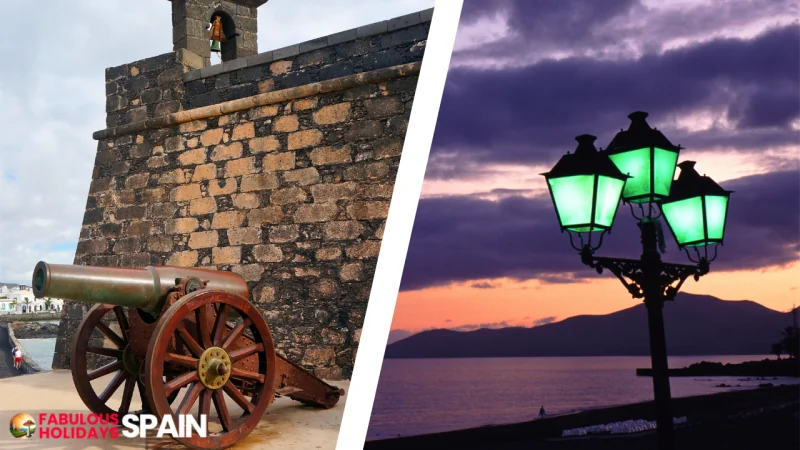
Lanzarote continues to evolve, balancing its rich cultural heritage with modern development.
The island’s commitment to sustainability and eco-friendly practices has made it a leader in sustainable tourism.
Lanzarote’s unique identity and cultural expressions continue to attract visitors worldwide, eager to experience the island’s natural beauty, vibrant culture, and warm hospitality.
5. Canary Islands Guide for La Palma
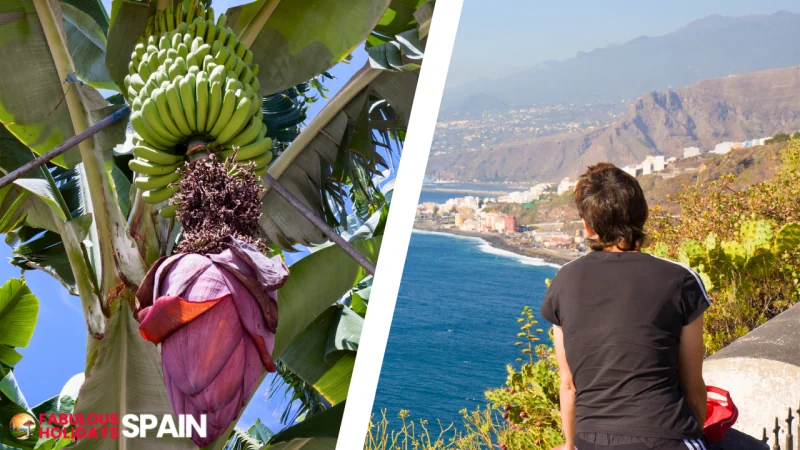
La Palma is the fifth-largest island in the Canary Islands, and it is known for its stunning volcanic landscapes, lush forests, and beautiful beaches.
The island has a rich cultural heritage, and it is home to several charming towns and villages.
Here are some of the most popular towns on La Palma:
Santa Cruz de La Palma: The capital of La Palma, Santa Cruz de La Palma is a vibrant city with a historic old town, a lively market, and several museums and cultural attractions. It is a great place to experience the island’s rich history and culture.
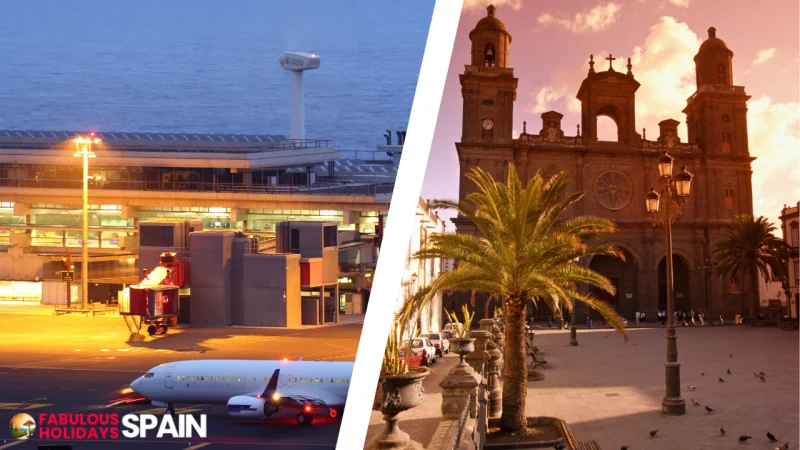
Los Llanos de Aridane: The largest town on La Palma, Los Llanos de Aridane is a bustling commercial centre with a variety of shops, restaurants, and bars. It is also a popular base for exploring the island’s natural attractions.
Garafía: A charming town nestled in the mountains of northern La Palma, Garafía is known for its beautiful scenery, traditional villages, and delicious cuisine. It is a great place to relax and enjoy the tranquillity of the island.
San Andrés y Sauces: A small town with a beautiful setting in the Caldera de Taburiente National Park, San Andrés y Sauces is a popular destination for hiking and exploring the park’s stunning landscapes.
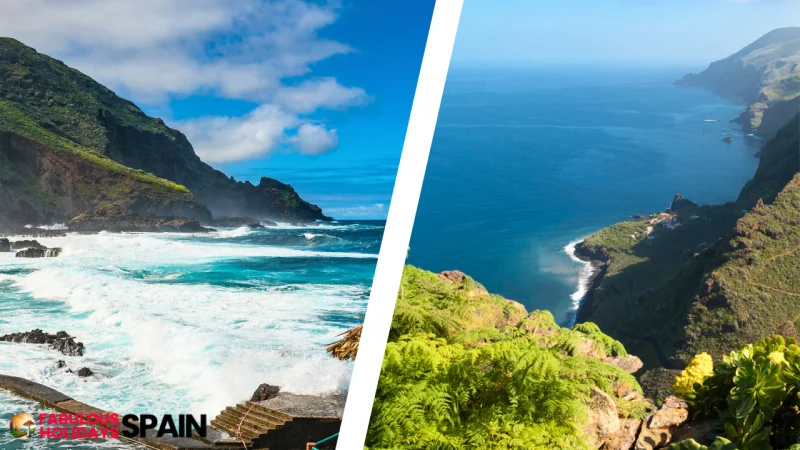
Tijarafe: A charming town with a rich history, Tijarafe is known for its traditional Canarian architecture, its beautiful churches, and its delicious local food.
Puntagorda: A small town with a relaxed atmosphere, Puntagorda is home to several vineyards and is a popular destination for wine lovers.
El Paso: A town with a lively atmosphere, El Paso is home to several art galleries and museums and is a popular base for exploring the Caldera de Taburiente National Park.
Barlovento: A small town with a beautiful setting on the east coast of La Palma, Barlovento is known for its beautiful beaches, its traditional villages, and its delicious seafood.
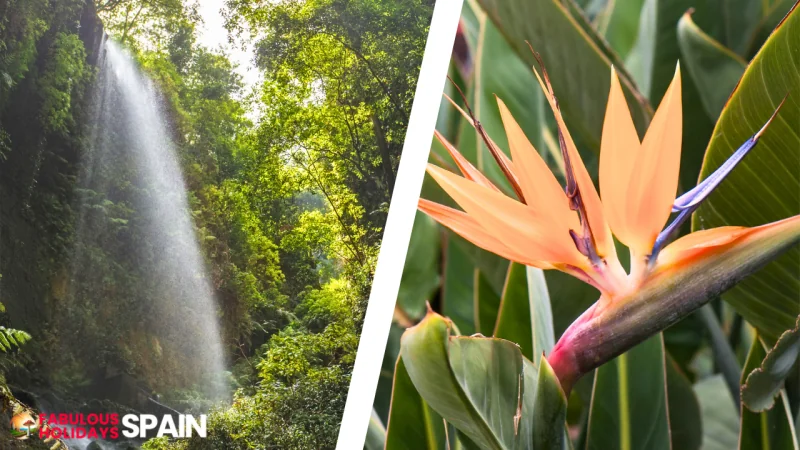
What is La Palma weather?
La Palma has a subtropical climate with mild temperatures year-round.
The average temperature is around 21°C (70°F), with highs typically ranging from 23°C to 26°C (73°F to 79°F) and lows from 18°C to 21°C (64°F to 70°F).
The island also enjoys plenty of sunshine, with an average of over 2,700 hours of sunshine per year.
The weather in La Palma varies slightly depending on the time of year and the location on the island.
The northern coast is generally cooler and wetter than the southern coast, and the higher elevations are cooler and more humid.
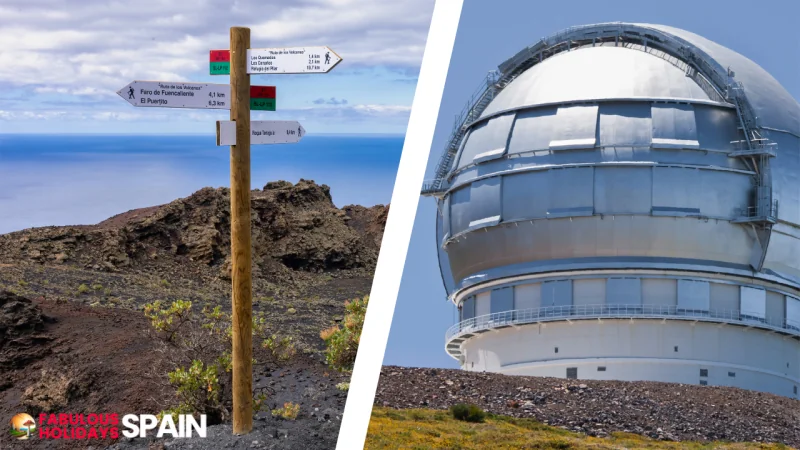
Here is a more detailed breakdown of the weather in La Palma by season:
- Spring (April to June): The weather in spring is pleasant and sunny, with average temperatures in the mid-20s Celsius (70s Fahrenheit). The days are long and there is little rainfall. This is a popular time to visit for those who want to enjoy the outdoors and avoid the crowds.
- Summer (July to September): Summer is the warmest and driest time of year on La Palma. Temperatures can reach up to 28°C (82°F) or higher, and humidity is low. This is a great time to enjoy the beaches and swimming pools, but it can also be quite hot, so be sure to stay hydrated.
- Autumn (October to November): Autumn is a shoulder season on La Palma, with pleasant temperatures and less humidity than in the summer. This is a good time to visit if you want to avoid the crowds and enjoy some of the lower prices.
- Winter (December to February): Winter is the coolest time of year on La Palma, but temperatures rarely drop below 17°C (63°F). There is also less rainfall than in the summer. This is a great time to enjoy the island’s many cultural events and festivals.
What is La Palma culture?
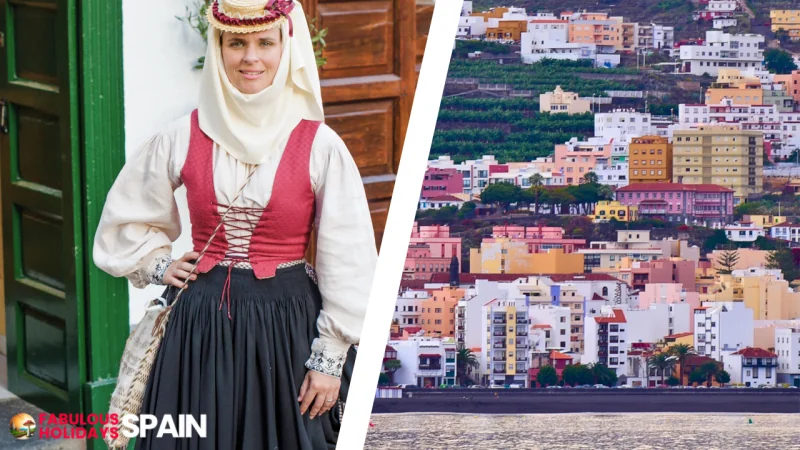
La Palma’s culture is a harmonious blend of Canarian, Spanish, and African influences. The island’s inhabitants are known for their warmth, love of music and dance, and connection to nature.
Distinctive whitewashed houses, traditional crafts, vibrant festivals, fresh cuisine, and lively music and dance all contribute to La Palma’s rich cultural tapestry. Visitors can immerse themselves in this unique heritage through these expressions of La Palma’s identity.
What is the history of La Palma?
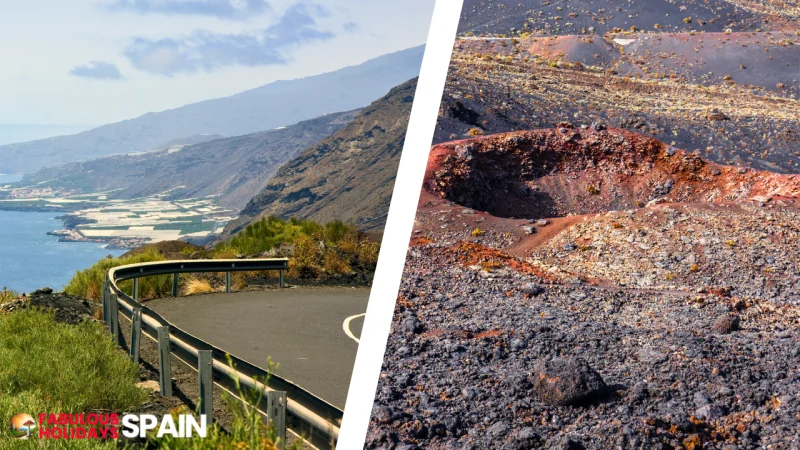
La Palma’s history is marked by volcanic origins, early Guanche settlements, Spanish conquest, economic development, and a strong focus on preservation and sustainability today.
6. Canary Islands Guide for La Gomera
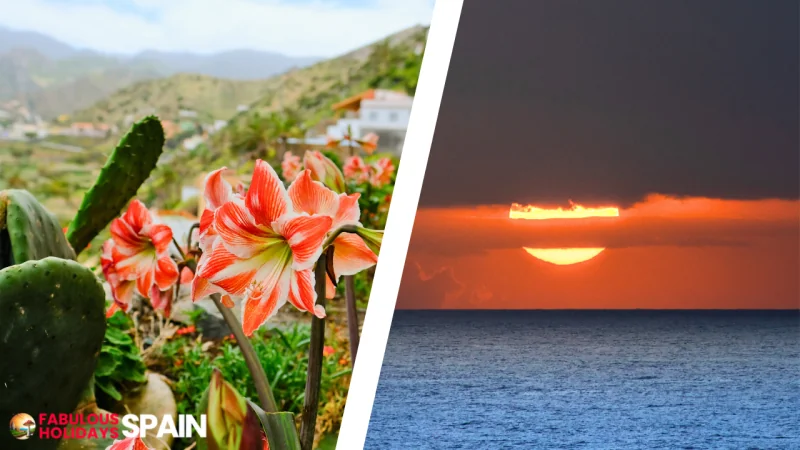
What are la Gomera towns and cities?
La Gomera is a beautiful and charming destination known for its lush forests, dramatic landscapes, and rich cultural heritage.
The island is home to a variety of towns and villages, each with its unique character and charm.
San Sebastián de la Gomera, the capital of La Gomera, is a bustling port town with a vibrant atmosphere. It is located on the eastern coast of the island and is known for its beautiful harbour and historic centre. San Sebastián is a great place to start your exploration of La Gomera, as it is well-connected to the rest of the island and offers a variety of restaurants, shops, and cultural attractions.
Vallehermoso, located on the northwestern side of the island, is a charming town known for its beautiful landscapes. The town is situated in a valley of lush greenery, and it is surrounded by mountains and waterfalls. Vallehermoso is a popular destination for hiking, mountain biking, and kayaking.
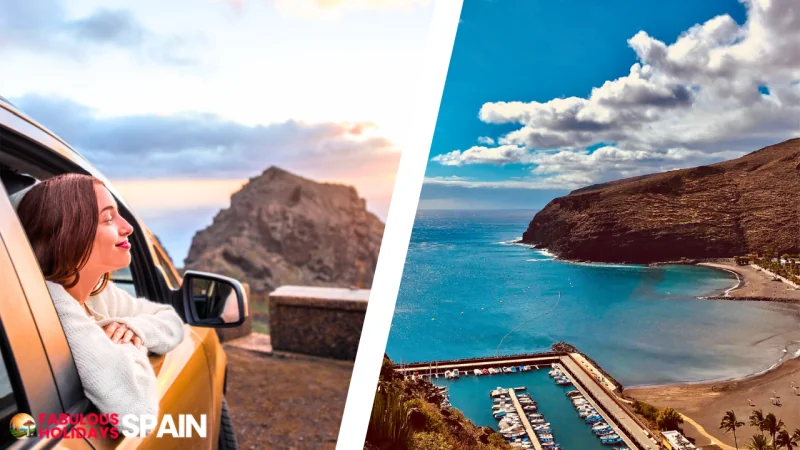
Agulo, located on the northeastern side of the island, is a picturesque town known for its whitewashed houses and stunning views of the Atlantic Ocean. Agulo is a great place to relax and soak up the sun, and it is also a popular spot for whale watching.
Hermigua, also located on the northwestern side of the island, is a vibrant town known for its banana plantations and traditional Canarian culture. Hermigua is a great place to experience the island’s rich agricultural heritage, and it is also home to festivals and celebrations throughout the year.
Valle Gran Rey, a valley located on the southwestern side of the island, is a laid-back paradise known for its beaches, laid-back atmosphere, and spiritual energy. The valley is home to several hippie communities, and it is a popular destination for yoga, meditation, and other wellness practices.
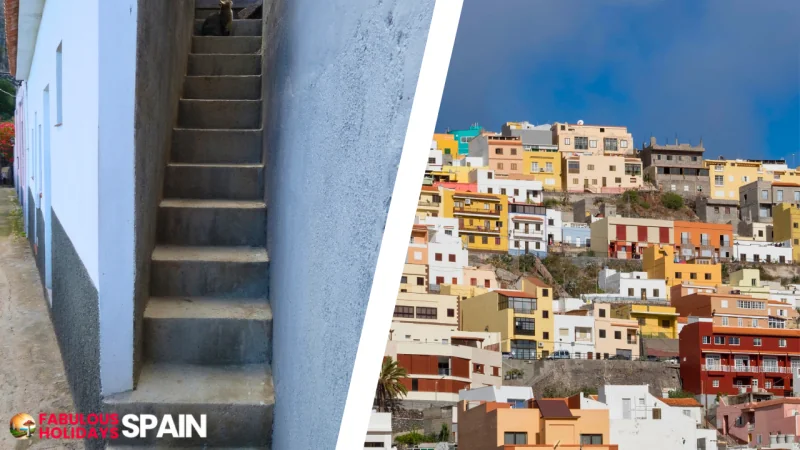
Vueltas, a small village in the northeastern part of Valle Gran Rey, is a popular tourist destination known for its restaurants, nightlife, and beautiful ocean views. The village is located on a clifftop, and it offers stunning views of the surrounding landscape.
Borbalan, a small village located in Valle Gran Rey, is a hidden gem known for its surfing and diving. The village is located on a secluded cove, and it is surrounded by lush greenery. Borbalan is a great place to escape the crowds and enjoy the peace.
El Cercado, a small village located in Valle Gran Rey, is a traditional Canarian town known for its vibrant festivals and celebrations. The village is located in a valley, and banana plantations surround it. El Cercado is a great place to experience the island’s rich cultural heritage.
Las Hayas, a small village and tranquil paradise known for its peace. The village is located in a lush valley, and mountains surround it. Las Hayas is a great place to relax and unwind, and it is also a popular spot for hiking and birdwatching.
What are La Gomera attractions?
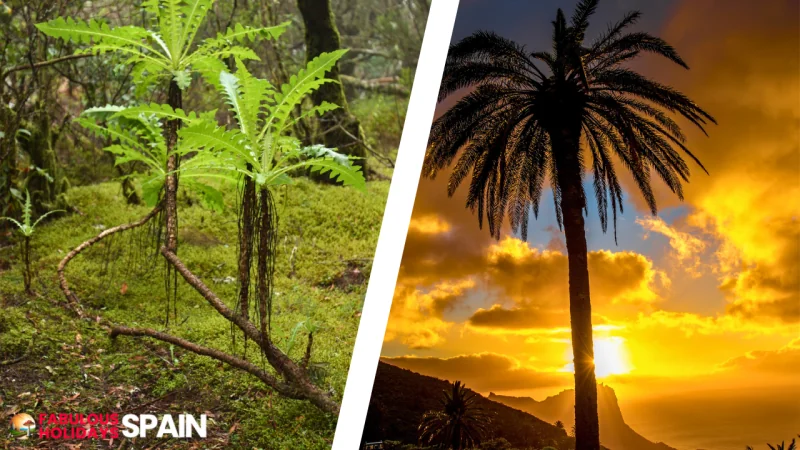
La Gomera, a volcanic island in the Canary Islands, Spain, is known for its lush forests, dramatic landscapes, and rich cultural heritage. Here are some of the top attractions to see and do on La Gomera:
Garajonay National Park: This UNESCO World Heritage Site is home to the last surviving laurel forests in Europe. The park is a haven for biodiversity, with a variety of plant and animal species, including the Canary Islands dragon tree, a symbol of the island.
Valle Gran Rey: This picturesque valley is home to charming villages, including Vallehermoso, with its traditional houses and stunning views of the valley, and Playa Santiago, a seaside resort with a lively atmosphere.
Los Organos: This natural rock formation is a series of towering volcanic pillars that rise from the sea. It’s a popular spot for hiking and sightseeing.
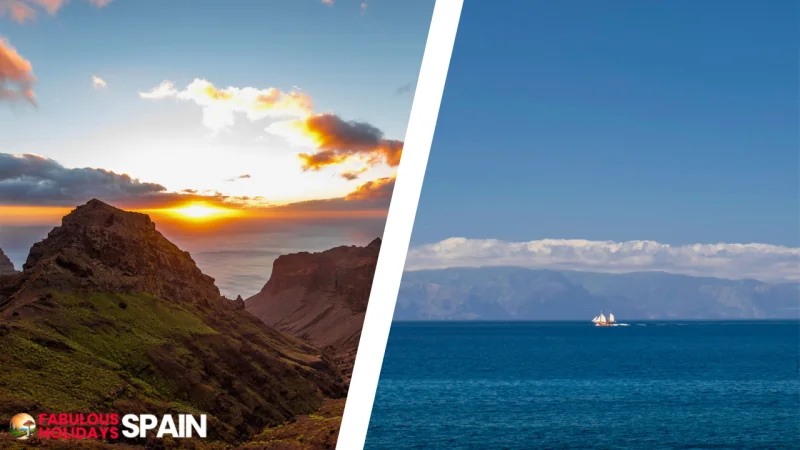
Parque Etnográfico Los Telares: This ethnographic park showcases the traditional way of life on La Gomera. Visitors can learn about the island’s history, culture, and natural resources through exhibits and demonstrations.
Mirador de Abrante: This viewpoint offers panoramic views of the island, from the lush green valleys to the rugged coastline. It’s a great place to see the island’s unique landscape features, including the Roques de Agando, a group of volcanic rock formations.
San Sebastián de La Gomera: The capital of La Gomera, San Sebastián is a charming town with a rich history. Visitors can explore the old town, with its cobblestone streets and whitewashed houses, and visit the Torre del Conde, a 15th-century tower that offers stunning views of the harbour.
Whale watching: La Gomera is a popular destination for whale watching, with a variety of species, including sperm whales, pilot whales, and dolphins, in its waters. Visitors can take a boat trip from San Sebastián or Valle Gran Rey and spot these magnificent creatures in their natural habitat.
Hiking: La Gomera is a hiker’s paradise, with over 1,000 kilometres of trails to explore. The trails range from easy coastal paths to challenging mountain hikes, offering stunning views of the island’s diverse landscapes.

Birdwatching: La Gomera is home to various bird species, including endemic species such as the Egyptian vulture and the Gomera warbler. Visitors can spot these birds in the laurel forests, along the coastline, and in the mountains.
Stargazing: La Gomera is a great place to stargaze due to its clear skies and lack of light pollution. Visitors can visit the Mirador de Abrante or other high points on the island to enjoy the stunning views of the night sky.
7. Canary Islands Guide for El Hierro

El Hierro, the smallest and southernmost of the seven Canary Islands, is home to a variety of charming towns and villages. Here are some of the most notable:
Valverde (capital city): Valverde is situated in the northeastern part of the island and is the administrative and religious centre of El Hierro. It is a picturesque town with traditional Canarian architecture, cobblestone streets, and a relaxed atmosphere.
Frontera: Frontera is located in the western part of the island and is known for its stunning views of the El Golfo natural crater. The town’s traditional architecture and historical landmarks, such as the Iglesia de Nuestra Señora de la Concepción and the Torre de Jinama, make it a popular tourist destination.

El Pinar de El Hierro: The municipality of El Pinar de El Hierro is located in the southern part of the island and is known for its lush greenery, volcanic landscapes, and traditional villages. The main town in the municipality is El Pinar, which is located at the foot of the highest peak on the island, Malpaso.
El Mocanal: El Mocanal is a small village located in the northeastern part of the island. It is known for its traditional Canarian architecture, its stunning views of the Atlantic Ocean, and its proximity to the El Hierro Airport.
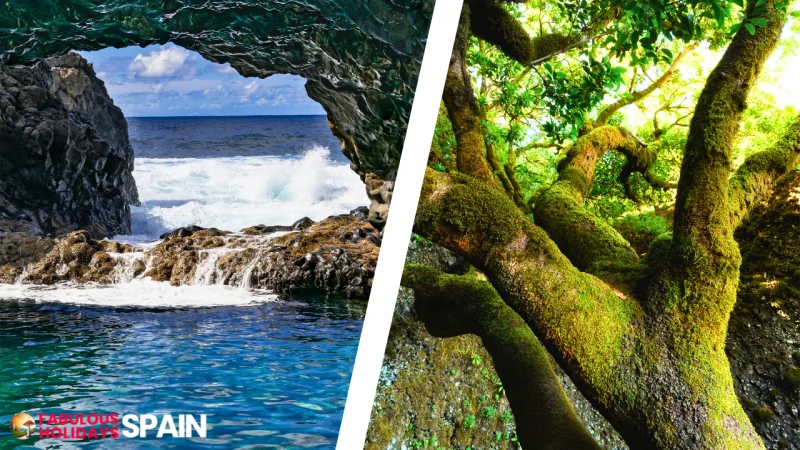
El Julán: El Julán is a small village located in the southern part of the island. It is known for its traditional Canarian architecture, its beautiful beaches, and its proximity to the El Hierro National Park.
La Restinga: La Restinga is a small fishing village located on the western coast of the island. It is known for its stunning views of the Atlantic Ocean, its delicious seafood, and its proximity to the El Hierro Lighthouse.
What is El Hierro weather?
El Hierro has a subtropical climate with pleasant temperatures year-round. The average temperature ranges from 18°C (64°F) in January to 24°C (75°F) in September. The temperature rarely dips below 15°C (59°F) at night, even in the winter.
Winter (November to March): Winter is the driest time of year in El Hierro, with an average of only 30mm of rain per month. The average daily temperature is 18°C (64°F), and the skies are often clear and sunny.
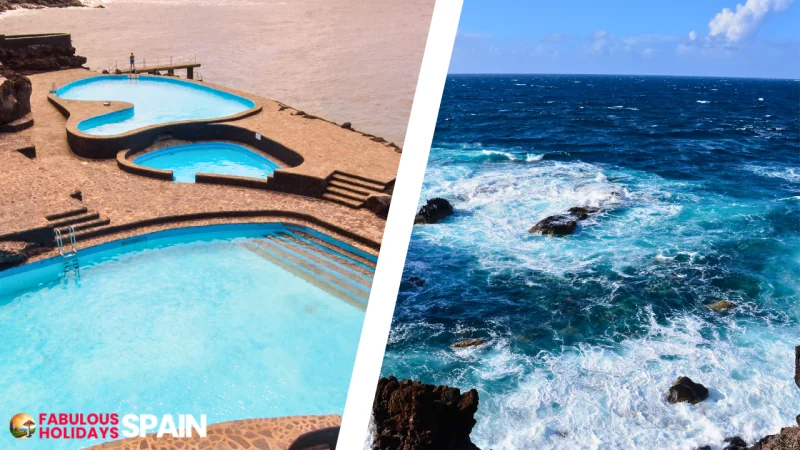
Spring (April to June): Spring is a beautiful time to visit El Hierro, as the island comes alive with flowers and greenery. The average daily temperature is 21°C (70°F), and there is an average of 60mm of rain per month.
Summer (July to October): Summer is the warmest time of year in El Hierro, with an average daily temperature of 24°C (75°F). However, the humidity is low, so it doesn’t feel as hot as it sounds. There is an average of 60mm of rain per month in the summer.
Autumn (November to March): Autumn is a great time to visit El Hierro if you’re looking for warm weather without the crowds. The average daily temperature is 21°C (70°F), and there is an average of 60mm of rain per month.
What are the attractions to see on El Hierro?
El Hierro, the smallest and southernmost of the seven Canary Islands, offers a wealth of natural beauty, cultural attractions, and outdoor activities.
Here are some of the top things to see and do on El Hierro:
Mirador de la Peña: This viewpoint offers panoramic views of the entire island, from the rugged coastline to the lush green interior. It’s a great place to see the island’s unique landforms, including volcanic craters and lava flows.
Charco Azul: This natural swimming pool is located in a volcanic crater and is surrounded by lush greenery. It’s a popular spot for swimming, snorkelling, and diving.
Pozo de las Calcosas: This natural pool is located in a volcanic cave and is said to have healing properties. It’s a popular spot for locals and tourists alike.
El Hierro Lighthouse: This lighthouse is located at the southernmost point of the island and is a popular spot for watching the sunset.
Las Playas Natural Monument: This stretch of coastline is home to a variety of beaches, including black sand beaches, white sand beaches, and rocky coves. It’s a great place for swimming, sunbathing, and surfing.
El Julan Archaeological Site: This site is home to the remains of a Guanche village, the indigenous people of the Canary Islands. It’s a fascinating place to learn about the island’s history.
Ecomuseo de Guinea y Lagartario: This open-air museum is dedicated to the island’s traditional way of life. It includes a collection of traditional houses, a replica of a Guanche village, and a lizard sanctuary.
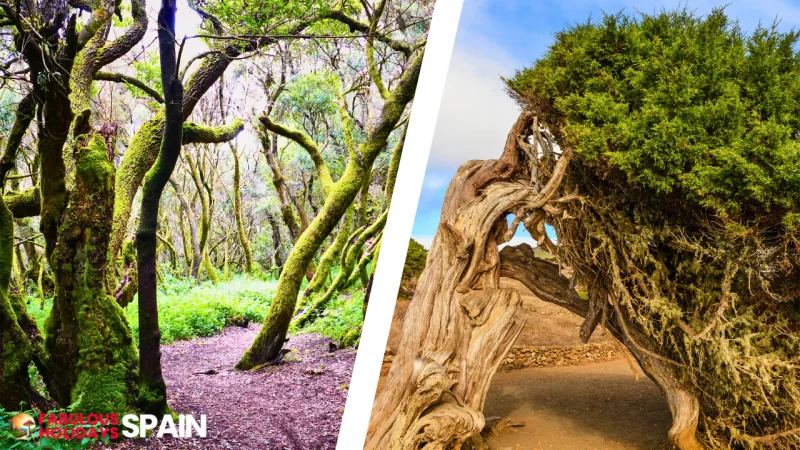
Hiking: El Hierro is a great place for hiking, with a variety of trails to suit all levels of experience. You can hike through lush forests, volcanic landscapes, and along the coast.
Diving: El Hierro is a haven for divers, with various marine life, including sharks, turtles, and dolphins. There are also several shipwrecks to explore.
Conslusion for this Canary Islands Guide
The Canary Islands are a yesr-round paradise with diverse landscapes, vibrant culture, and incredible people.
So it’s your turn to book your tickets and come to explore the beauty you will never forget!

